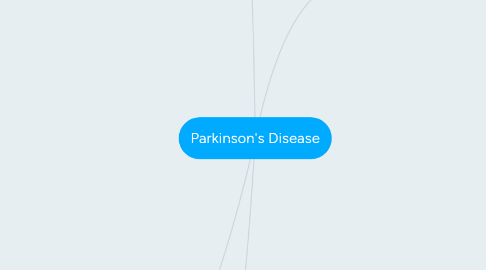
1. http://www.ucb.com/patients/conditions/cns/parkinsons "Parkinson's Disease", 2014
1.1. 400 million people worldwide are affected by Parkinson's. It is one of the most common diseases worldwide.
2. How many people are affected by this disease? What are the affects to their life and to the lives of people around them?
2.1. "What is Parkinson's Disease?" Parkinson's Disease Foundation. Parkinson's Disease Foundation, 2014. Web. 07 May 2014. <http://www.pdf.org/en/about_pd>.
2.1.1. author: many contributors because it is an organization's website bias: none coverage: This answers one of the questions and has lots of useful links and keywords date: 2014
2.1.1.1. Symptoms include rigidness, shaking, impaired motor skills, and more making many daily tasks much harder than average.
2.1.1.1.1. Synthesis: Many people are affected by this disease, and this disease can flip someone's world upside down. It makes everyday tasks much more difficult or impossible, making the people around you help you constantly. It doesn't just affect the sufferer, but their loved ones and friends who must help them do daily tasks.
3. Who are the leaders of the research for a cure? What steps have they taken along the way? Do people think that the researchers have used the money wisely?
3.1. Fahn, Stanley. "Chasing the Cure." Parkinson's Disease Foundation. Parkinson's Disease Foundation, 2014. Web. 01 May 2014. <http://www.pdf.org/en/chasing_parkinsons_cure>
3.1.1. Author: Stanley Fahn, a doctor in Houston who runs the Center for Parkinson's Disease. Bias: none Coverage: This answers all the questions. It is a credible website because many scientists and researchers have added to this website. Date: Very current. Updated this year.
3.1.1.1. -First the scientists researched how genetics and the environment affected the probability of the disease. -The researchers then created a theory of why people get this disease -The scientists figure out how the disease progresses through the body and thinks of possible treatments. -Scientist have learned lots from patients throughout the years and are still making progress to a cure.
3.2. Elbaz, Alexis, et al. "Lack of Replication of Thirteen Single-nucleotide Polymorphisms Implicated in Parkinson's Disease: A Large-scale International Study." The Lancet Neurology 5.11 (2006): 917-23. Print. http://www.ncbi.nlm.nih.gov/pmc/articles/PMC3636768/
3.2.1. Author: multiple doctors from different countries contributed to this study. Bias: none coverage: this source answers my question and has credible information from multiple doctors. Date: current, 2013
3.2.1.1. - Michael J. Fox has a foundation that funded and conducted research to try to find out what part of the DNA strip changes to cause the disease.
3.2.1.1.1. Synthesis: Michael J. Fox has been a big part of Parkinson's research over the years. He has donated tons of money to help try to find a cure. Scientists have research the disease itself and possible treatments to help with the effects this disease carries with it. They have learned what treatments help and which don't through their patients, and the scientists have made changes according to the patients' feedback. A cure is coming, but no one knows.
3.3. http://en.wikipedia.org/wiki/The_Michael_J._Fox_Foundation
3.3.1. -The Michael J Fox Foundation has funded $350 million of research -the Michael J. Fox Foundation is the largest nonprofit for Parkinson's Disease in America.
4. Is there research being done to find a cure? How are they conducting this research? Is there any controversial trial drugs?
4.1. "Medication." Parkinson's Australia. Parkinson's Australia, 2008. Web. 7 May 2014. <http://www.parkinsons.org.au/about-ps/medication.html>
4.1.1. author: organization's website bias: none coverage: this answers my question and has multiple facts consistent with other sources date: 2008
4.1.1.1. Some of the medications that many doctors prescribe to Parkinson's patients are Levodopa, Dopamine Agonists, Monoamine oxidase type B inhibitor, Anticholinergics, and COMT Inhibitors. Side effects include vomiting, constipation, hallucinations, memory loss,
4.2. Carr, Jonathan "Controversies in Parkinson's disease." Continuing Medical Education 24.9 (2008): 500. <http://www.cmej.org.za/index.php/cmej/article/view/482>
4.2.1. Author: JA Carr. He is a professor at the University of Stellenbosch in the Department of Neurology. Bias: none Coverage: This answers this question and gives me useful info to continue research. Date: 2008, current
4.2.1.1. -Many people used to think that dopamine was bad and counterproductive for Parkinson's Disease patients but studies have shown that dopamine is actually a very successful in helping sufferers of the disease -stem cell therapy is an option, but not found to help much. -a couple of surgeries could help. t pallidotomy and subthalamic nucleus (STN) deep brain stimulation are all possible treatments that have been somewhat helpful.
4.2.1.1.1. Synthesis: Research has been done in the past which has disproved that dopamine was bad for sufferers and found helpful possible treatments. Scientists still think longer research trials will be more telling. There are some treatments that have helped people but there is still no cure to this disease.
4.3. Keus, Samyra HJ, et al. "Evidence‐based analysis of physical therapy in Parkinson's disease with recommendations for practice and research." Movement Disorders 22.4 (2007): 451-460.
4.3.1. -past research has been less successful because they have failed to create solid treatment recommendations. -A national Practice Recommendations Development Group was set up in December of 2001 to set up guidelines for the development of treatment practices. -The Development Group's guidelines was reviewed by Dutch Parkinson's Disease Association and with their questions they updated the guidelines. -Physical therapy is recommended to help daily function, but it will not help slow the progression of the disease. It will decrease the risk of falling and injury themselves. -scientists believe that future research should focus on the patient's cues and movements strategies and which strategies are more effective. - Future research needs to follow the patients for 6 months or longer to try to see if improvements are being made.
